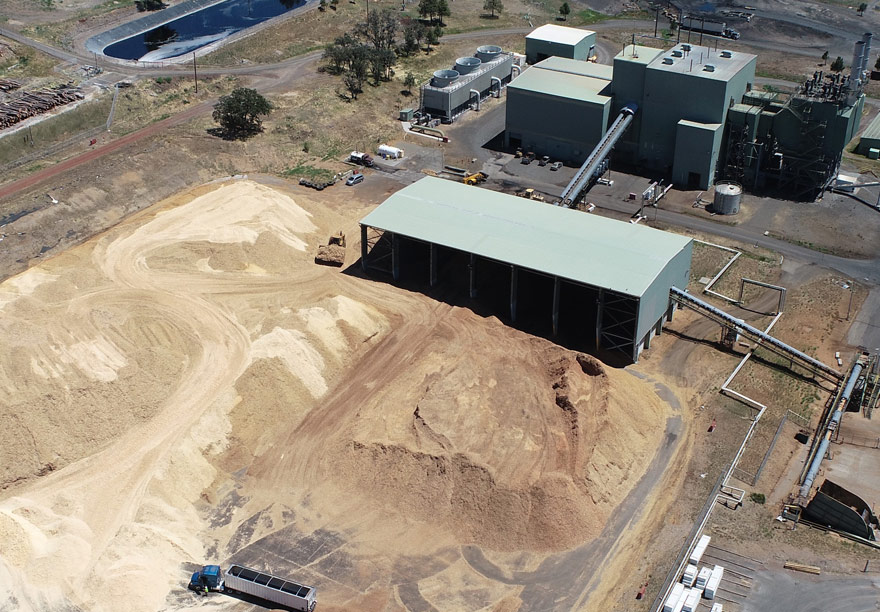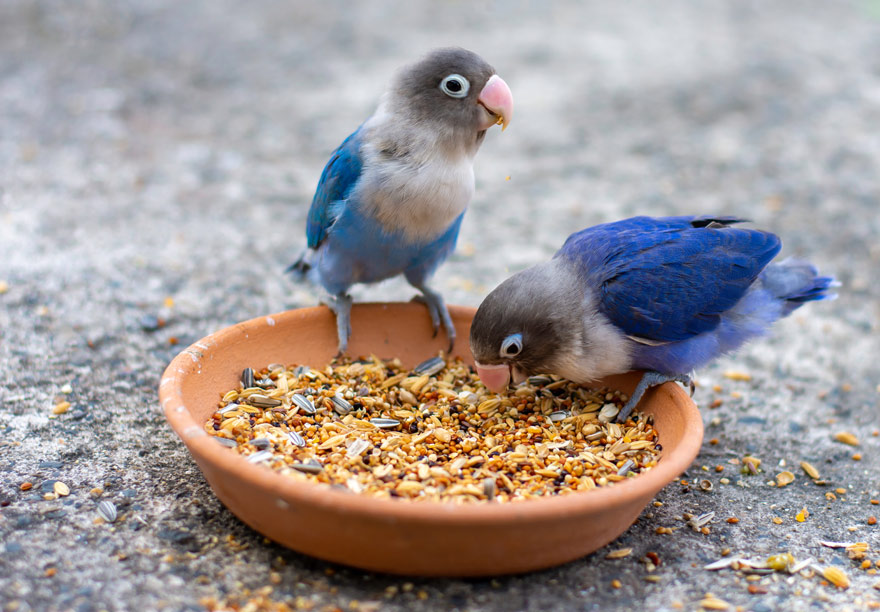Livestock Feed

Livestock feed represents a large percentage of the market for by-products that carry a nutritional and edible characteristic. The use of these by-products in livestock nutrition represents yet another sustainable alternative to by-products, further keeping them out of the waste stream.
BioEnergy

Many of the by-products Agra Marketing works with find their way into the bioenergy stream. This is an exceptionally useful destination for these products that would otherwise have been disposed of wastefully. Bioenergy represents a renewable and efficient alternative to fossil fuel energy.
According to the Wood Energy Extension, one bone dry ton of biomass fuel produces roughly one megawatt-hour of energy, enough to power 1000 homes for 1 hour.
Exotic Pet Feed

Many of the off sized and broken nut and seed by-products Agra Marketing deals in are ultimately utilized in the bird and exotic pet food markets.
Jump to By-Products
Wood
Wood Shavings
Description:
Soft and hard wood shavings from the lumber milling process.
Usage:
Livestock bedding, particle board and medium density fiberboard (MDF)
Urban Ground Wood
Description:
Clean construction debris ground to specific sizes.
Usage:
MDF and Particle board raw material, landscaping and composite filler.
Recycled Cardboard
Description:
Re-usable cardboard.
Usage:
Recycled paper, Hydro-mulch, bedding.
Oak Chips
Description:
Oak chips, sized and cut.
Usage:
Hardwood pulp, fire logs, wine flavoring and composite filler.
Cedar Bark
Description:
Red fibrous material.
Usage:
Landscaping and biomass fuel.
Redwood Bark
Description:
Red fibrous material.
Usage:
Landscaping and biomass fuel.
Mixed Pine Chips
Description:
Softwood Pine species.
Usage:
Pulp & Paper, composite board raw material, playground bedding, biomass fuel, and MDF dust generated from the milling process.
Log Yard Mulch
Description:
0"-1/2" size, brown/black mulch.
Usage:
Landscape & potting soil mixes.
MDF Dust
Description:
MDF fine dust.
Usage:
Biomass fuel, soil amendments.
Orchard Grindings
Description:
Wood generated from orchard removal.
Usage:
Biomass fuel, landscaping and composting.
Almonds
Almond Hulls
Description:
The outer covering of the almond kernel and shell.
Usage:
As a fiber source in livestock feed. Dairy cows produce more milk when almond hulls are part of a balanced feed ration. Prime hulls maximum fiber is 15%.
Almond Hulls - Fan Blown
Description:
Almond Hulls that have gone through a fan. They have the same nutrient level as almond hulls.
Usage:
Livestock feed
Almond Shell and Hull
Description:
A mixture of Almond Shell and Almond Hulls with greater than 15% and less than 29% fiber.
Usage:
Livestock feed
Almond Hash
Description:
Pieces of Almond meat produced during the shelling process. Usually accompanied with small pieces of almond hull and shell.
Usages:
Livestock feed, pressed for almond oil and bird seed.
Almond Shell - Ground or Whole Pieces
Description:
The fiber material between an almond hull and the almond meat. Considered a hard wood.
Usage:
Ground or whole piece shell is used in biomass fuel, fire place logs, glue filler for laminate board, raw material for medium density fiberboard (MDF) and particle board production, mineral mix carriers for livestock, livestock feed and charcoal briquettes. Can also be used as a bedding product for the dairy and poultry industry. Landscaping uses include walkway material and gardening mulch.
Almond Press Cake
Description:
The residue of almond meats pressed for oil, with a majority of the oil removed. Approximately 20% protein and 10% fat.
Usage:
A fat source in livestock feed.
Almond Wood Chips
Description:
Almond trees, ground or chipped.
Usage:
Biomass fuel, feedstock for cellulosic ethanol, landscape ground cover similar to bark.
Cyclone Almond Huller Dust
Description:
Interactive and relativity high in organic matter and plant nutrient.
Usage:
Compost additive.
Walnut
Walnut Meal High Fat
Description:
This is a by-product of the walnut shelling process. Pieces of walnut meat which broke off of the walnut kernel are screened out. Walnut meal can be as high as 50%-60% oil or more.
Usage:
High fat walnut meal is pressed and the resulting oil is used as edible walnut oil.
Walnut Press Cake
Description:
The residue of walnut meats pressed for oil. Approximately 20% protein and 10% fat.
Usage:
Feed industry.
Walnut Oil Stock
Description:
Small pieces of meats and membranes generated from the shelling process.
Usage:
Feed industry.
Walnut Muller Meal
Description:
A by-product of grinding walnut shell, bits of walnut meat, cudical and membrane from walnut shell.
Usage:
Biomass fuel, livestock feed, charcoal briquettes, manufactured fireplace logs.
Walnut Shell - Ground and Sized
Description:
Hard covering of a walnut meat ground and sized.
Usage:
Paint filler, as a non-skid agent, bird litter, well drilling, blasting media for sensitive metals and wood, polishing rifle and pistol brass etc. Also used as a water filtering media and a glue fill for laminate board. This is an environmentally friendly product. Visit Eco Shell for grinding.
Walnut Blows
Description:
Walnut blanks separated during the hulling process.
Usage:
Biomass fuel, additive for compost and soil amendments.
Pistachios
Pistachio Shell
Description:
The shell that encloses the pistachio meat.
Usage:
Biomass fuel and livestock feed.
Rice
Brown Rice Screenings
Description:
Brown rice is rice with only the hull removed. Unlike white rice, brown rice has not undergone a milling process to remove the outer layer of bran.
Usage:
Livestock feed.
Broken Rice
Description:
Small pieces of rice broken off the whole kernel during the milling process.
Usage:
High protein premium pet food. Dairy mixed feed.
Grain Screenings
Description:
Grain Screenings are a by-product of cleaning rice, wheat, barley or oats for seed. Light, broken kernels, weed seeds and chaf.
Usage:
Livestock feed.
Rice Bran
Description:
The outside of the rice kernel generated during the milling process.
Usage:
It is widely used as a protein source in livestock feed.
Rice Screenings
Description:
Rice screenings are a by-product developed when cleaning rice for seed.
Usage:
Livestock feed. Light, broken kernels, blank seeds, chaf and weed seeds used as a high-fiber grain replacement.
Rice Hulls
Description:
The outer shell of the rice kernel removed during the hulling process.
Usage:
Poultry and dairy livestock bedding, compost additive, fiber extender in feed.
Mixed Paddy Rice
Description:
Different rice varieties are mixed together inadvertently and therefore cannot be milled or sold for human consumption
Usage:
Mixed Paddy rice is used as livestock feed and as a grain replacement.
Seed
Sunflower Screenings
Description:
Light and blank sunflower seeds, chaf, etc.
Usage:
Livestock feed: is high in oil and a excellent fiber source.
Sunflower Seeds-Undersized
Description:
Seeds that are too small for seed planting purposes.
Usage:
Sunflower seeds that are undersized and re-cleaned are used in bird seed.
Bean Culls
Description:
Split and damaged beans, approximately 20% protein.
Usage:
Livestock feed.
Vine Seed Screenings
Description:
Light and cull seed removed while recleaning vine seed.
Usage:
Livestock feed. Good source of protein.
Safflower Screening
Description:
Light and blank safflower seeds, weed seeds, chaf, etc.
Usage:
Livestock feed, high in oil and protein.
Cottonseed
Description:
Seed left over after delinting and is high in protein.
Usage:
Livestock feed.
Grape Seed
Description:
By-product of grapes.
Usage:
Livestock feed: high in protein and oil. Also used in cosmetics and human nutrients.
Ground Grape Pomace
Description:
A by-product of the grape juice and wine manufactures separated from the grapes
Usage:
Biomass fuel and as a fiber replacement in livestock feed.
Fruit
Apple Pulp
Description:
An apple with the juice removed.
Usage:
Livestock feed.
Grape Pomace - Wet
Description:
Seeds, pulp, skin and small pieces of stem with the grape juice removed are all by-products of the wine industry.
Usage:
Livestock feed, biomass fuel, and organic compost. It's a good fiber replacement in feed.
Grape Pomace - Dry
Description:
Ground seeds, pulp, skin and small pieces of stem with the grape juice removed. These are all by-products of the wine industry and are solar dried at our Tracy storage facility.
Usage:
Livestock feed.
Grape Pomace - Dry Ground
Description:
Ground seeds, pulp, skin and small pieces of stem with the grape juice removed are all by-products of the wine industry.
Usage:
Livestock feed.
Olive Pomace - Wet
Description:
Ground pit, skin and meat with a small percentage of oil left over after the oil extraction process.
Usage:
Livestock feed.
Olive Pomace - Dry
Description:
Ground pit, skin and meat with a small percentage of oil left over after the oil extraction process.
Usage:
Livestock feed, biomass fuel.
Peach Pits
Description:
The pit of a peach.
Usage:
Fireplace logs and biomass fuel, solar dried at our Tracy storage facility.
Cherry Pits
Description:
The pit of a cherry.
Usage:
Biomass fuel, ground product as compost additive, and in some cases livestock feed and fireplace logs. Solar dried at our Tracy storage facility.
Apricot Pits
Description:
The pit of an apricot.
Usage:
Fireplace logs, livestock feed and biomass fuel. Solar dried at our Tracy storage facility.
Prunes - Undersized
Description:
Undersized prunes.
Usage:
Livestock feed, solar dried at our Tracy storage facility.
Prune Pits
Description:
The pit of a prune.
Usage:
Prune Pits are ground and used as livestock feed. Also used for manufactured fireplace logs and biomass fuel. Solar dried at our Tracy storage facility.
Questions and Order Information
Are you a grower, processor or buyer?
If you are interested in buying or selling any of the by-products listed, please contact us to discuss our marketing services.

